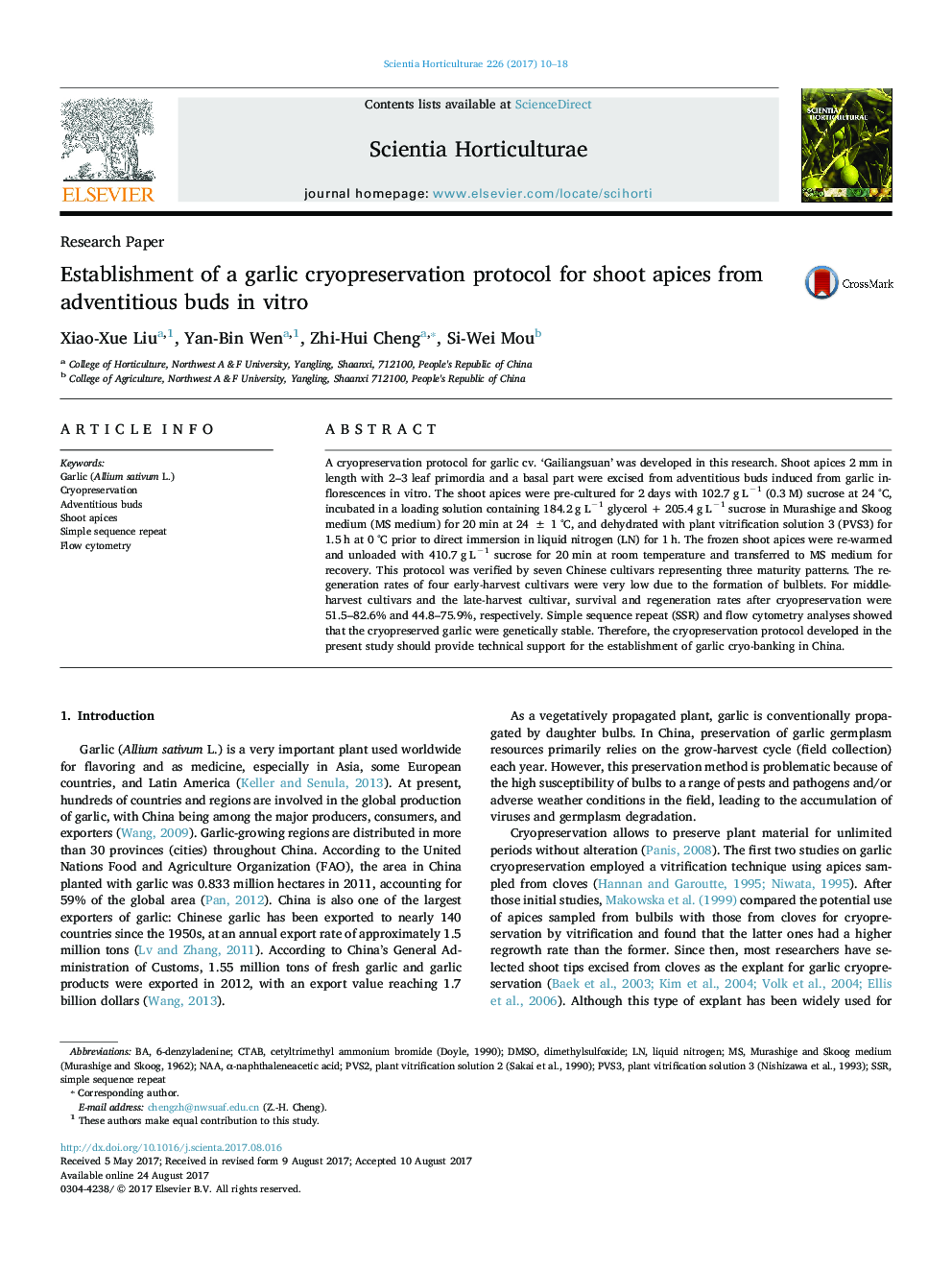| Article ID | Journal | Published Year | Pages | File Type |
|---|---|---|---|---|
| 5769337 | Scientia Horticulturae | 2017 | 9 Pages |
â¢A cryopreservation protocol of garlic was developed by using adventitious buds in vitro.â¢The highest survival and regeneration achieved by this protocol were 82.6% and 75.9%, respectively.â¢The cryopreserved garlic was genetically stable in level of molecule biology and cytology.
A cryopreservation protocol for garlic cv. 'Gailiangsuan' was developed in this research. Shoot apices 2 mm in length with 2-3 leaf primordia and a basal part were excised from adventitious buds induced from garlic inflorescences in vitro. The shoot apices were pre-cultured for 2 days with 102.7 g Lâ1 (0.3 M) sucrose at 24 °C, incubated in a loading solution containing 184.2 g Lâ1 glycerol + 205.4 g Lâ1 sucrose in Murashige and Skoog medium (MS medium) for 20 min at 24 ± 1 °C, and dehydrated with plant vitrification solution 3 (PVS3) for 1.5 h at 0 °C prior to direct immersion in liquid nitrogen (LN) for 1 h. The frozen shoot apices were re-warmed and unloaded with 410.7 g Lâ1 sucrose for 20 min at room temperature and transferred to MS medium for recovery. This protocol was verified by seven Chinese cultivars representing three maturity patterns. The regeneration rates of four early-harvest cultivars were very low due to the formation of bulblets. For middle-harvest cultivars and the late-harvest cultivar, survival and regeneration rates after cryopreservation were 51.5-82.6% and 44.8-75.9%, respectively. Simple sequence repeat (SSR) and flow cytometry analyses showed that the cryopreserved garlic were genetically stable. Therefore, the cryopreservation protocol developed in the present study should provide technical support for the establishment of garlic cryo-banking in China.
